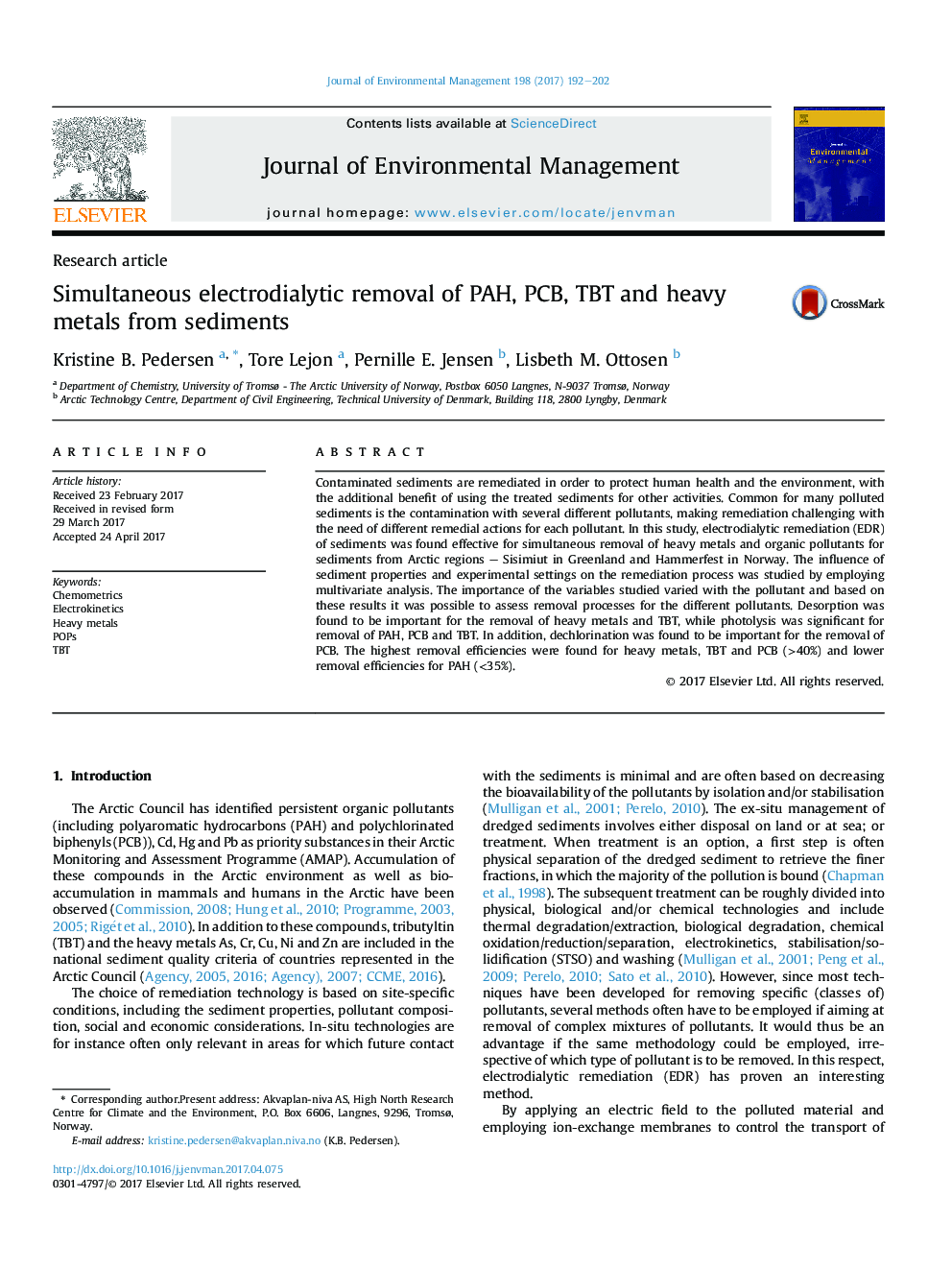| Article ID | Journal | Published Year | Pages | File Type |
|---|---|---|---|---|
| 5116743 | Journal of Environmental Management | 2017 | 11 Pages |
Abstract
Contaminated sediments are remediated in order to protect human health and the environment, with the additional benefit of using the treated sediments for other activities. Common for many polluted sediments is the contamination with several different pollutants, making remediation challenging with the need of different remedial actions for each pollutant. In this study, electrodialytic remediation (EDR) of sediments was found effective for simultaneous removal of heavy metals and organic pollutants for sediments from Arctic regions - Sisimiut in Greenland and Hammerfest in Norway. The influence of sediment properties and experimental settings on the remediation process was studied by employing multivariate analysis. The importance of the variables studied varied with the pollutant and based on these results it was possible to assess removal processes for the different pollutants. Desorption was found to be important for the removal of heavy metals and TBT, while photolysis was significant for removal of PAH, PCB and TBT. In addition, dechlorination was found to be important for the removal of PCB. The highest removal efficiencies were found for heavy metals, TBT and PCB (>40%) and lower removal efficiencies for PAH (<35%).
Related Topics
Physical Sciences and Engineering
Energy
Renewable Energy, Sustainability and the Environment
Authors
Kristine B. Pedersen, Tore Lejon, Pernille E. Jensen, Lisbeth M. Ottosen,
